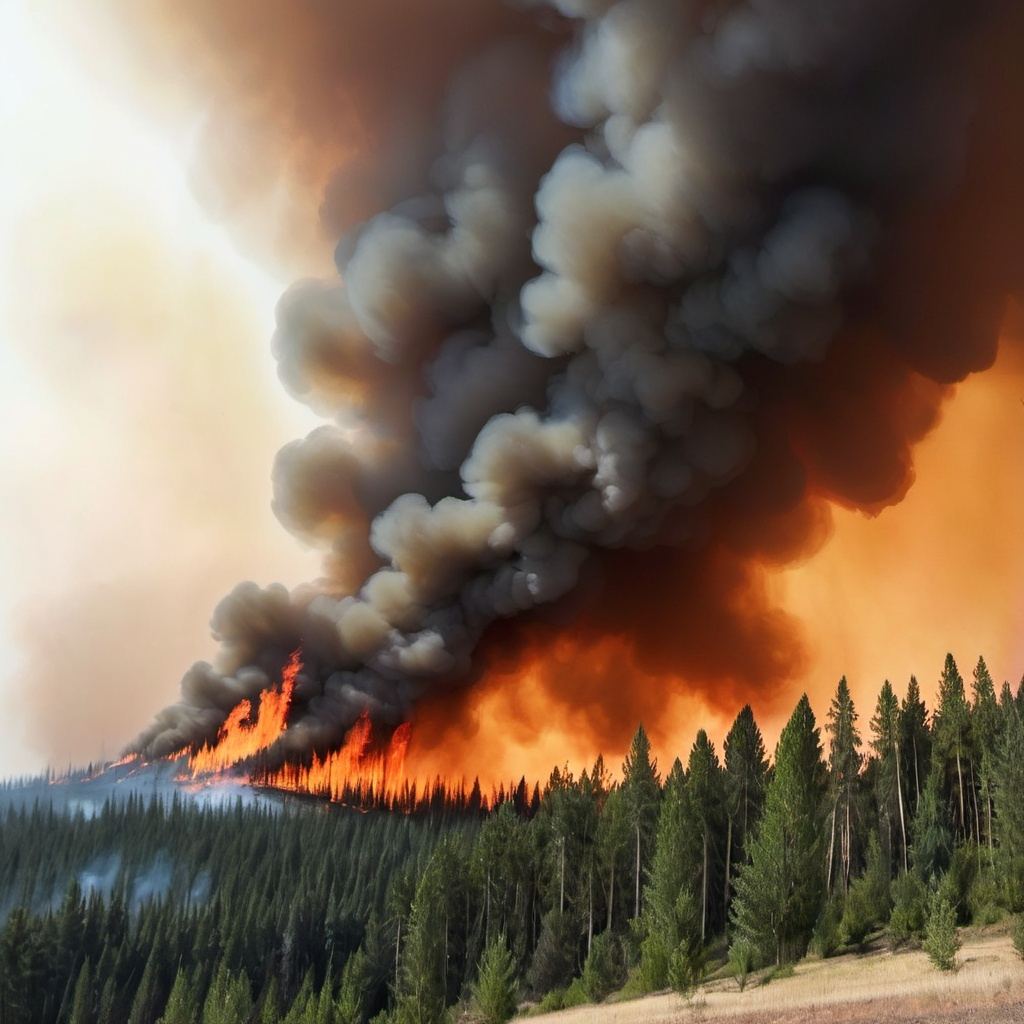
Table of Contents
Introduction to the Issue
In recent years, the increasing incidence of wildfires causing breathing problems has become a pressing public health concern. Fires, whether they are wildfires or those occurring in urban areas, release a significant amount of smoke and particulate matter into the atmosphere, including wildfire smoke, leading to detrimental effects on air quality. This article aims to explore the journey of smoke, its health risks, the populations most vulnerable to smoke inhalation, breathing problems, preventive measures, and the importance of community awareness in tackling this growing issue.
As wildfires become more frequent, the number of people experiencing breathing problems due to wildfire smoke is increasing, making it essential to address this urgent issue.
Importance of Air Quality
Those with pre-existing conditions are especially at risk for breathing problems when air quality deteriorates.
Air quality plays a critical role in our overall health and well-being. Poor air quality can exacerbate existing health issues and contribute to the development of new conditions. The World Health Organization (WHO) has identified air pollution, particularly particulate matter, as one of the leading environmental health risks. When fires occur, they release various pollutants, including carbon monoxide, volatile organic compounds, and fine particulate matter (PM2.5), as well as wildfire smoke, all of which can lead to serious health concerns.
The public health implications are serious, as the increasing pollution leads to more reported cases of breathing problems.
People with chronic health issues are particularly vulnerable to developing breathing problems due to wildfire smoke.
With the rise in wildfires, more people are experiencing breathing problems, highlighting the need for effective strategies.
Moreover, air quality is not just a local issue; it can affect regions far away from the source of pollution. Smoke from wildfires can travel hundreds of miles, impacting air quality in areas that may not be directly involved in the fire. Overview of Wildfires and Their Effects
Wildfires are uncontrolled fires that burn in wildland areas, often fueled by dry conditions, high winds, and extreme temperatures. The impact of wildfires extends beyond the immediate destruction of property and loss of life; they contribute significantly to air pollution. According to the U.S. Environmental Protection Agency (EPA), wildfires contribute to over 40% of the annual fine particulate air pollution in the United States during fire season.
This widespread smoke can lead to significant increases in reported breathing problems across affected regions.
Those exposed to prolonged smoke are likely to suffer from long-lasting breathing problems.
Understanding how smoke leads to breathing problems can help communities prepare better for wildfires.
The smoke produced by wildfires contains a mixture of gases and fine particles, which can have varying effects on health depending on the concentration and exposure levels.
The situation has been exacerbated by climate change, which has increased the frequency and intensity of wildfires globally.
Emergency departments often see increases in cases related to breathing problems during these smoke events.
Not only can smoke cause immediate symptoms, but it can also lead to chronic breathing problems over time.
The long-term impacts of smoke exposure can manifest as chronic breathing problems in many individuals.
Many youths are reporting increased breathing problems from exposure to smoke during the summer months.
The Journey of Smoke How Smoke Travels Long Distances
Those suffering from asthma are particularly at risk and may find their breathing problems worsening during wildfire season.
Children exposed to wildfire smoke face a heightened risk of developing breathing problems.
The elderly population, due to declining health, may experience more severe breathing problems from smoke exposure.
Those with pre-existing conditions often report heightened breathing problems during times of poor air quality.
Smoke is a complex mixture of gases and particles that can easily rise into the atmosphere. Once released, smoke can be transported over long distances by prevailing winds. The altitude at which smoke rises is a crucial factor; higher altitudes can allow smoke to travel hundreds of miles before settling back to lower altitudes. This phenomenon is particularly concerning as it enables smoke to affect air quality far from the fire’s origin.
Community programs can play a role in addressing breathing problems by providing resources and support for affected individuals.
In addition to wind patterns, meteorological conditions such as temperature inversions can also play a role in smoke dispersion. During a temperature inversion, a layer of warm air traps cooler air at the surface, preventing smoke from dispersing upwards. This can create stagnant air conditions, resulting in local air quality deterioration and prolonged exposure to harmful pollutants.
Staying informed about air quality can help mitigate the risks associated with breathing problems.
Awareness about the symptoms of breathing problems is crucial for timely intervention during wildfire events.
Factors Influencing Smoke Dispersion
Using air purifiers can help reduce indoor breathing problems during heavy smoke events.
Individuals may also consider wearing masks to prevent breathing problems when outdoors in smoky conditions.
Several factors influence how smoke spreads, including vegetation type, moisture content, and fire intensity. Different types of vegetation produce varying amounts of smoke; for instance, coniferous trees tend to burn hotter and produce more dense smoke compared to deciduous trees. Moreover, the moisture content in fuels plays a significant role; drier conditions lead to more intense burning, resulting in increased smoke production.
Community preparedness can help mitigate the risks of breathing problems during wildfire seasons.
Training community members to recognize breathing problems can enhance response efforts during emergencies.
In urban areas, the presence of buildings and infrastructures can also affect smoke dispersion. When fires occur in cities, the smoke can become trapped between buildings, leading to a more concentrated exposure for residents. This localized pollution can have severe health implications, highlighting the need for effective air quality management strategies in both rural and urban settings.
Understanding the relationship between smoke and breathing problems is crucial for effective public health responses.
Ultimately, proactive measures can help mitigate the impact of breathing problems on at-risk populations.
Health Risks Associated with Smoke Exposure
Exposure to smoke can lead to immediate respiratory issues, particularly among sensitive individuals. Short-term effects include coughing, wheezing, shortness of breath, and throat irritation. These symptoms are typically caused by the fine particles in smoke, which can penetrate deep into the lungs, causing inflammation and respiratory distress.
For healthy adults, short-term exposure may result in mild symptoms that resolve after leaving the smoke-affected area. However, individuals with pre-existing respiratory conditions such as asthma or Chronic Obstructive Pulmonary Disease (COPD) may experience exacerbated symptoms, requiring medical attention. Emergency departments often see an increase in visits during smoky conditions as vulnerable populations struggle to manage their breathing difficulties.
Long-term Respiratory Issues
While short-term effects are concerning, the long-term health impacts of smoke exposure are even more alarming. Prolonged exposure to fine particulate matter can lead to chronic respiratory diseases, cardiovascular issues, and a decrease in lung function. Studies have shown that consistent exposure to wildfire smoke is associated with an increased risk of developing asthma and other chronic respiratory conditions.
Furthermore, emerging research suggests that long-term exposure to air pollution from wildfires may also increase the risk of developing certain cancers. The complex mixture of chemicals in smoke can have varied effects on human health, necessitating further research into its long-term impact. Awareness and education about these risks are essential for encouraging proactive health measures among at-risk populations.
Children and the Elderly
Some populations are more susceptible to the negative effects of smoke exposure than others. Children, due to their developing respiratory systems, are particularly vulnerable to the impacts of air pollution. Their higher rates of respiration mean they inhale more air and, consequently, more pollutants relative to their body weight compared to adults.
Elderly individuals also face increased risks, as age-related decline in lung function makes them less able to cope with the effects of smoke. Additionally, both children and the elderly often have a higher prevalence of pre-existing respiratory and cardiovascular diseases, compounding their vulnerability during smoky conditions.
Individuals with Pre-existing Conditions
Individuals with pre-existing health conditions, particularly respiratory or cardiovascular diseases, face significant risks during periods of poor air quality due to smoke. Asthma sufferers may find their symptoms exacerbated, leading to increased hospitalizations and medical interventions. Similarly, those with heart disease are at risk of heart attacks and other complications triggered by particulate matter.
It is essential for individuals in these vulnerable categories to have an action plan in place during wildfire seasons. This may include having medications readily available, staying indoors during poor air quality alerts, and utilizing air purifiers to create a safe environment. Community health initiatives can support these populations by providing resources and education on coping strategies.
Staying Informed During Fire Season
One of the most effective ways to mitigate the health risks associated with smoke exposure is to stay informed about air quality conditions during fire season. Local health departments and environmental agencies often provide real-time information through various platforms, including social media, websites, and mobile applications. Monitoring air quality index (AQI) levels can help individuals determine when to take precautions, such as staying indoors or limiting outdoor activities.
Additionally, public health campaigns can raise awareness about the importance of air quality and provide guidance on protective measures. These initiatives can be particularly beneficial in rural and vulnerable communities where access to information may be limited. Education about recognizing symptoms of smoke exposure can empower residents to take action before health problems escalate.
Using Air Purifiers and Masks
During periods of heavy smoke, using air purifiers can significantly improve indoor air quality by removing fine particles and pollutants. HEPA filters are particularly effective at filtering out small particles, making them an advisable choice for households in smoke-affected areas. Additionally, keeping windows and doors closed during smoky conditions can help prevent outdoor air from entering and compounding indoor air quality issues.
For individuals who must go outside during smoky conditions, wearing masks designed to filter out particulate matter can provide an added layer of protection. N95 respirators, for instance, can effectively block harmful particles from entering the lungs. It is essential to ensure a proper fit to guarantee maximum efficacy; poorly fitting masks can allow unfiltered air to enter, diminishing the protective benefits.
Importance of Community Preparedness
Community preparedness plays a vital role in managing the health risks associated with smoke exposure. Local governments and organizations can work together to develop comprehensive smoke response strategies that include education, resources, and support for vulnerable populations. This collaborative approach can foster resilience in communities, ensuring that residents are equipped to handle air quality emergencies effectively.
Community programs may also include training sessions on recognizing symptoms of smoke exposure, improving local air quality monitoring, and establishing clear communication channels to relay important information during wildfires. Engaging community members in discussions about air quality and health can lead to increased awareness and proactive measures to protect public health.
Recap of Key Points
Wildfires have become a significant public health concern, particularly due to their impact on air quality and the associated health risks from smoke exposure. Understanding how smoke travels, the health risks it poses, and identifying vulnerable populations are essential steps in addressing the issue. Preventive measures, such as staying informed, using air purifiers, and wearing protective masks, can help mitigate the risks for individuals, especially those in susceptible groups.
Furthermore, community awareness and action are crucial in fostering resilience against the health impacts of wildfire smoke. By advocating for clean air initiatives and engaging in preparedness efforts, communities can protect their residents and promote public health. Ultimately, tackling the challenges posed by smoke exposure requires a collective commitment to education, awareness, and action.
FAQ’s
What are the immediate symptoms of smoke exposure?
Immediate symptoms include coughing, throat irritation, wheezing, and shortness of breath. Individuals may also experience headaches and eye irritation depending on their sensitivity to smoke.
How can I protect myself during wildfire season?
Stay informed about air quality levels, use air purifiers indoors, wear protective masks when going outside, and limit outdoor activities during high pollution days.
Who is most at risk from smoke exposure?
Children, the elderly, and individuals with pre-existing respiratory or cardiovascular conditions are particularly vulnerable to the effects of smoke exposure.
What actions can communities take to improve air quality?
Communities can implement air monitoring systems, engage in public health education campaigns, and advocate for policies that reduce emissions and promote clean air initiatives.
Products
Air Filters
-
Austin Air HealthMate Standard Air Purifier
$790.00Successfully Added to your Shopping CartAdding to Cart...
Tests
-
←→
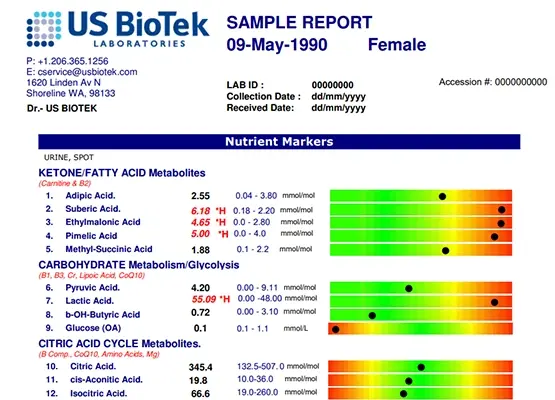
US BioTek Organic Acids Profile Environmental Pollutants Profile
$339.00$269.00A unique biochemistry profile called Organic Acid Test (OAT) can detect alterations in your gut, cellular deficiencies, levels of neurotrasmitters, exposures to mold or fungus and indicate need for specific nutrients, diet modifications and detoxification. Combine the OAT with the Environmental Pollutants Profile (EPP) for a more complete snapshot picture of toxic exposure to environmental chemicals.- Buy 2 at $264.00
US BioTek Organic Acids Profile Environmental Pollutants Profile
At Home Health Tests, Nutritional Tests, Mycotoxin Molds Tests, Autism Tests, Environmental Pollutants Tests, Organic Acids Tests, Detox Solutions$339.00 $269.00Successfully Added to your Shopping CartAdding to Cart... -
←→
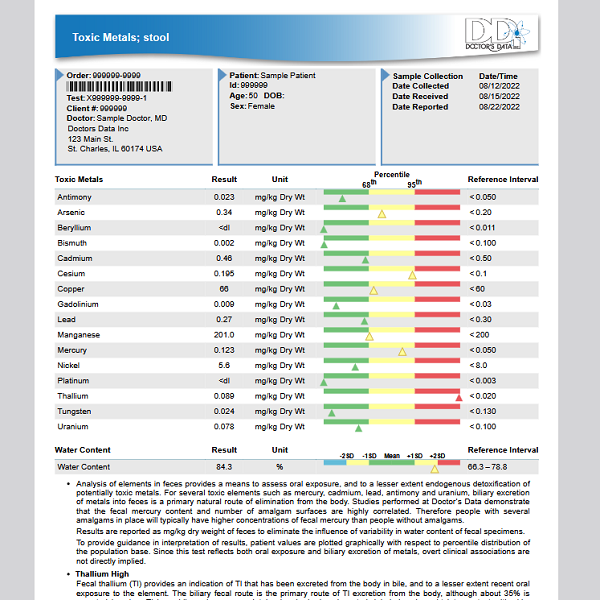
Doctors Data Stool Toxic Metals Test
$208.00$189.00The Doctors Data Stool Toxic Elements Test is an analysis of toxic elements in feces providing a comprehensive evaluation of environmental exposure, potential for accumulation in the body, and possibly endogenous detoxification of potentially toxic metals.- Buy 2 at $184.00
Doctors Data Stool Toxic Metals Test
$208.00 $189.00Successfully Added to your Shopping CartAdding to Cart... -
←→

Analytical Research Labs Hair Test
$179.00$149.00Providing a mineral blueprint of one’s biochemistry, an Analytical Research Labs Hair Minerals Test reports levels of minerals and heavy metals in your body giving possible reasons for your symptoms, with suggestions for nutritional supplements and diet changes. Hair tissue mineral analysis can provide pertinent information about balanced nutrition, one’s metabolic rate, energy levels, sugar and carbohydrate tolerance, stage of stress, immune system and glandular activity.- Buy 2 at $145.00
Analytical Research Labs Hair Test
$179.00 $149.00Successfully Added to your Shopping CartAdding to Cart... -
←→
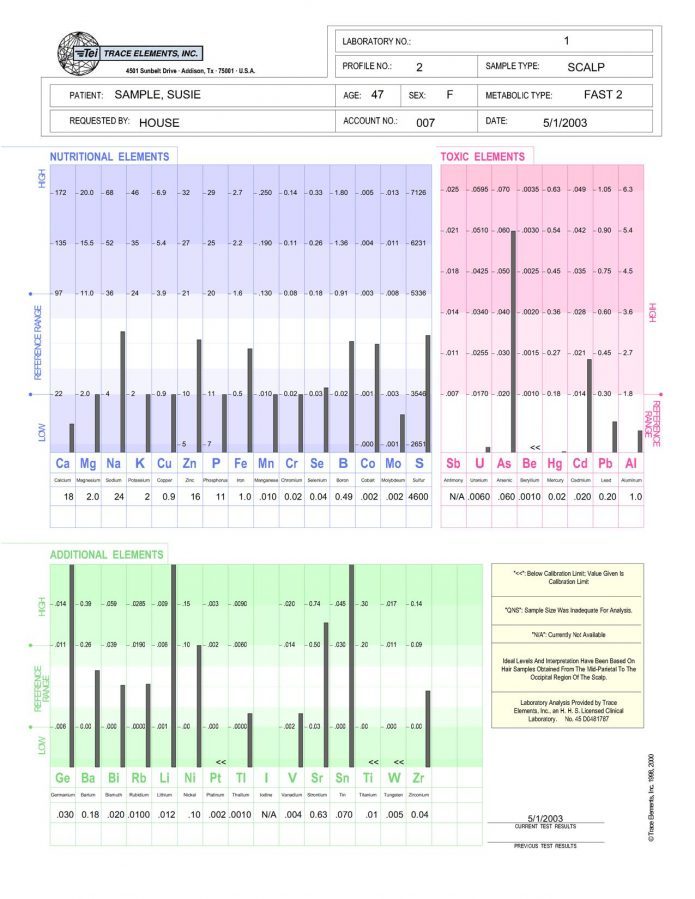
Trace Elements Nutritional Deficiencies Hair Test
Nutritional Tests, At Home Health Tests, Toxic Metals Tests, Hair Tests, Autism Tests, Immune System Tests$188.00 $148.00Successfully Added to your Shopping CartAdding to Cart... -
←→
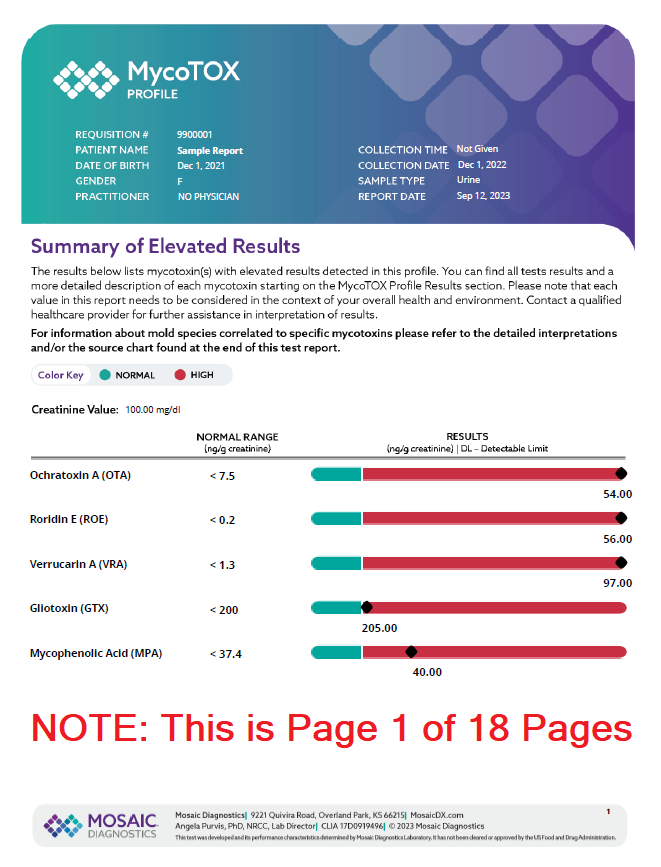
Mosaic MycoTOX Profile
$345.00$325.00Mycotoxins are some of the most prevalent toxins in the environment. Mycotoxins are produced from fungi like mold, and can infest buildings, vehicles, and foodstuffs. Fungi are able to grow on almost any surface, especially if the environment is warm and wet. Inner wall materials of buildings, wall paper, fiber glass insulation, ceiling tiles, and gypsum support are all good surfaces for fungi to colonize. These fungi then release mycotoxins into the environment causing symptoms of many different chronic diseases. Diseases and symptoms linked to mycotoxin exposure include fever, pneumonia-like symptoms, heart disease, rheumatic disease, asthma, sinusitis, cancer, memory loss, vision loss, chronic fatigue, skin rashes, depression, ADHD, anxiety, and liver damage. With our MycoTOX Profile, we can identify mycotoxin exposures and make recommendations for detoxification treatments that have been effective.- Buy 2 at $320.00
Mosaic MycoTOX Profile
At Home Health Tests, Mycotoxin Molds Tests, Detox Solutions, Immune System Solutions, Candida Solutions$345.00 $325.00Successfully Added to your Shopping CartAdding to Cart... -
←→

UCARI Intolerance Test Kit
$99.99$88.00Test for 1500+ possible intolerances and nutritional imbalances- Buy 2 at $85.00
UCARI Intolerance Test Kit
At Home Health Tests, Hair Tests, Allergy Tests, Nutritional Tests, Environmental Pollutants Tests, Mycotoxin Molds Tests, Allergy Solutions, Lung Solutions, Gastrointestinal Solutions, Immune System Tests, Candida Solutions$99.99 $88.00Successfully Added to your Shopping CartAdding to Cart... -
←→
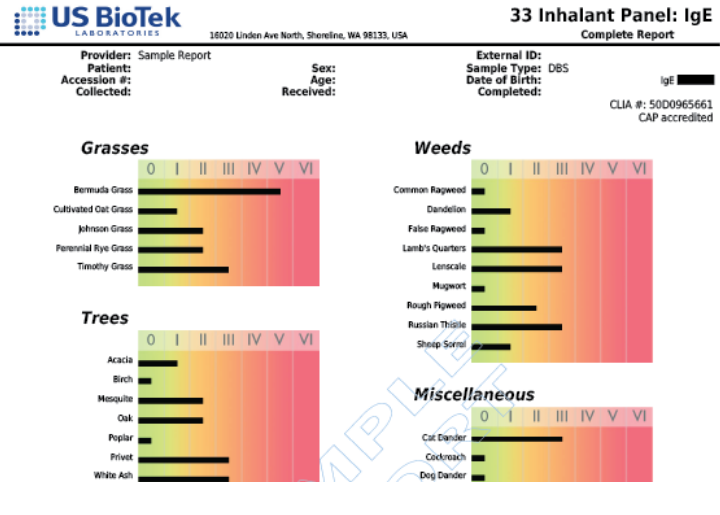
US BioTek 33 Inhalent Allergy Panel Bloodspot
Blood Spot Tests, Allergy Solutions, At Home Health Tests, Mycotoxin Molds Tests, Immune System Solutions, Lung Solutions, Allergy Tests, Immune System Tests$249.00 $209.00Successfully Added to your Shopping CartAdding to Cart... -
←→
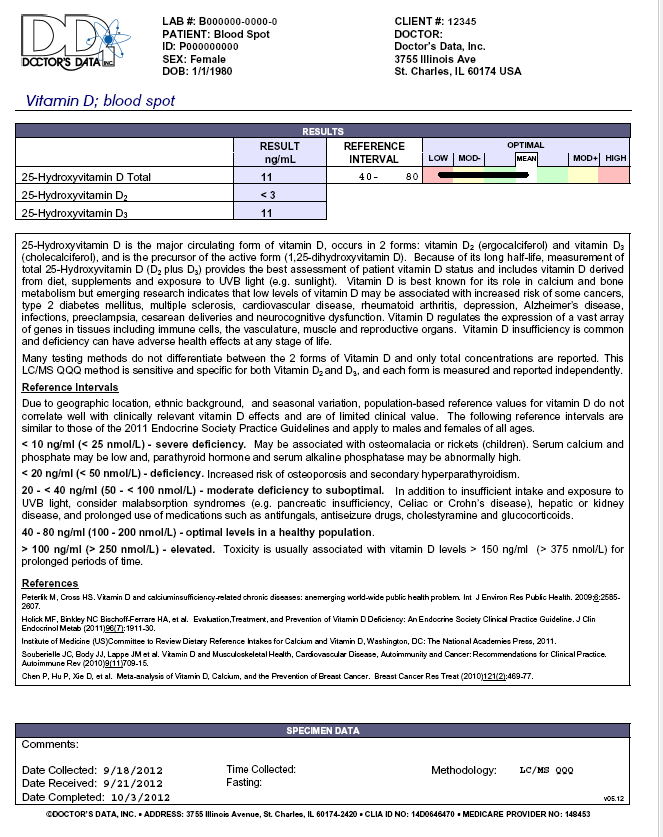
Doctors Data Vitamin D Test Blood Spot
$89.99$79.00Find out your Vitamin D level now with an at home Doctors Data Vitamin D Blood Spot Test. With a simple finger prick blood test, you can know your levels of Vitamin D and adjust your diet and lifestyle to make your Vitamin D levels normal.Doctors Data Vitamin D Test Blood Spot
At Home Health Tests, Blood Spot Tests, Immune System Tests, Vitamin Tests, Immune System Solutions, Heart Solutions, Bone Solutions, Virus Solutions, Arthritis Solutions, Anxiety, Stress, Depression Solutions, Autism Solutions$89.99 $79.00Successfully Added to your Shopping CartAdding to Cart...
Supplements
-
←→

Pau d'Arco
Supplements, Immune System Solutions, Detox Solutions, Virus Solutions, Antioxidant Supplements, Candida Solutions, Autism Solutions$33.50Successfully Added to your Shopping CartAdding to Cart... -
←→

Zinc Arginate with Aspartate
Supplements, Mineral Supplements, Skin Solutions, Immune System Solutions, Amino Acids Supplements, Allergy Solutions$8.10Successfully Added to your Shopping CartAdding to Cart... -
←→

Adrena Pan-C
$17.50Combat stress and anxiety with the power of science. This unique blend includes adrenal and spleen nucleic acids as well as key components of vitamin C and coenzymes crucial for adrenal function. Adrena Pan-C supports your body's natural adrenal response. It's especially beneficial for those who get tired when stressed, or who have poor dietary habits. -
←→

Buffered C with Calcium, Magnesium & Potassium
Supplements, Vitamin Supplements, Skin Solutions, Cancer Solutions, Immune System Solutions, Antioxidant Supplements, Allergy Solutions, Autism Solutions$11.70Successfully Added to your Shopping CartAdding to Cart... -
←→

Perque Potent C Guard Buffered Ascorbate Powder
$79.99Maximum quantity exceededMinimum purchase amount of 0 is requiredPerque Potent C Guard Buffered Ascorbate Powder
$79.99Successfully Added to your Shopping CartAdding to Cart... -

Virus, Cold & FLU Combo Package
$247.00$224.95This is a package of supplements specifically designed for Virus, Cold & FLU Support.Maximum quantity exceededMinimum purchase amount of 0 is requiredVirus, Cold & FLU Combo Package
$247.00 $224.95Successfully Added to your Shopping CartAdding to Cart...
References
- Fire and Smoke Map
- Get air quality data where you live
- Air Quality Index (AQI) Basics
- Washington Smoke Blog
- Air Quality Notifications
- Wildfire Smoke: A Guide for Public Health Officials

